Rose Abracadabra
Looking at the flower of this plant, some people cannot even believe that it is a rose - its colors are so unusual. The variety is worth falling in love with just for this extravagance! However, not all roses sold under this name look exactly like this.
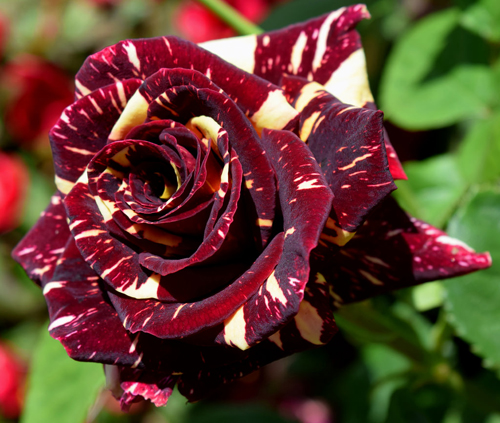
2002 year
Species diversity
The fact is that in the world of roses there are three subspecies of this variety. Let's consider them in more detail.
Abracadabra tea-hybrid
The ancestor of the entire line, created in 1991 in one of the California nurseries by American William Warriner. In 1993 it was presented at the exhibition by the Jackson and Perkins Company under the name "Abracadabra". To create this variety, the hybrid tea varieties White Masterpiece and Tribute were used.
The flowers are delicate, pinkish-white in color, with a strong odor, predominantly located on the peduncle singly, but they can also grow in small inflorescences. Shoots are abundantly covered with thorns.
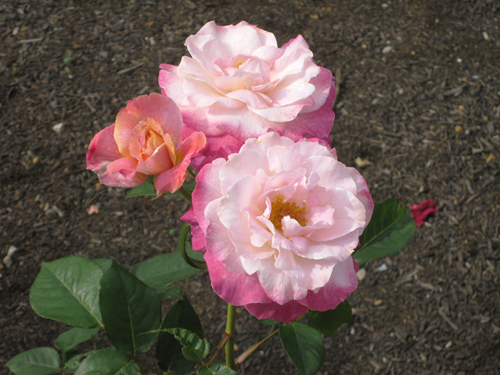
1991 year
Abracadabra floribunda, Kordes, 2002
Created in 2002 in Germany, in the well-known nursery W. Kordes & Sons, using the popular at that time Hocus Pocus variety. Any rose has the main decoration - its flowers, this axiom does not require proof. But for the A. floribunda variety, the stated truth takes on a special meaning. The color of the flowers is impressive: white, red, cream, yellow and even brown shades are mixed in it in a bizarre way! They form stripes, strokes, spots of complex configurations. Looking at a flower of this variety, one involuntarily visits philosophical thoughts about the infinity of forms in nature. It was her flowers that we mentioned at the very beginning of the article.
The aroma of this rose is weak, the thorns on the branches are almost absent.
Abracadabra floribunda, Kordes, 2004
From the name it is clear that the variety was created in the same nursery as the previous one, only two years later. But it was presented as "Abracadabra" only in 2014. It differs from its predecessor mainly by increased terry and the predominance of white and light pink tones in the color scheme. The spine of the shoots is weak.
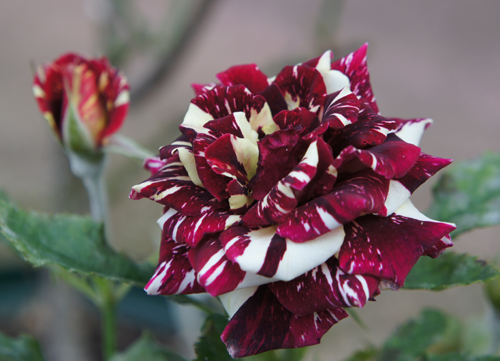
2002 year
general description
All three varieties were intended primarily for cultivation in greenhouses, as cut varieties. Outwardly, they look like a powerful, spreading bush, but skillful pruning without problems turns the plants into standard trees, sometimes reaching one and a half meters (in most cases, about a meter). The leaves are dark green, tough, glossy; when grown outdoors, they acquire a brownish tint.
Characteristics of flowers
The size is characterized as medium, usually it is 7 - 9 cm in diameter, but occasionally there are larger specimens. Variegated beauties are located mainly singly, crowning a long stem. Some shoots form an inflorescence of several, rather small flowers.
To all its advantages, the flowers of all Abracadabras emit a smell of varying degrees of intensity, depending on the species: pleasant, refined, reminiscent of good ladies' perfume. Moreover, with good care, they are able to bloom several times a year, and in greenhouses - all year round.
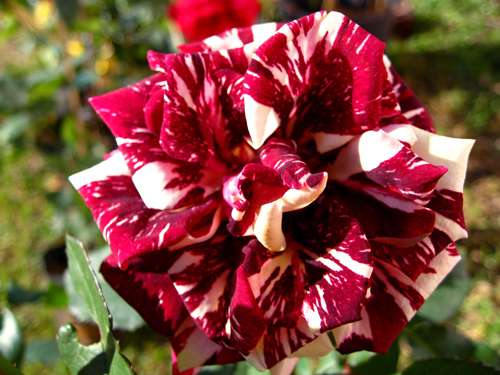
2004 r.
Application features
Most often, Abracadabra is grown for its intended purpose - for cutting. Thanks to powerful peduncles that accumulate many nutrients, it can be stored in a vase for a long time (at least two weeks), and its unusual flowers perfectly complement the bouquets, giving them an unusual charm.
At the same time, the variety is often cultivated in the open field, especially in southern regions with mild winters. It should be remembered that the bushes are guaranteed to survive frosts of at least -10 °, while they require reliable shelter.
A tree or a sprawling bush of Abracadabra will decorate any flower garden, garden plot. Usually it is planted in plain sight, delegating the role of the dominant to the plant. The variegated color allows designers to combine this variety with most other roses, as well as with many flowers, bushes, and even trees.
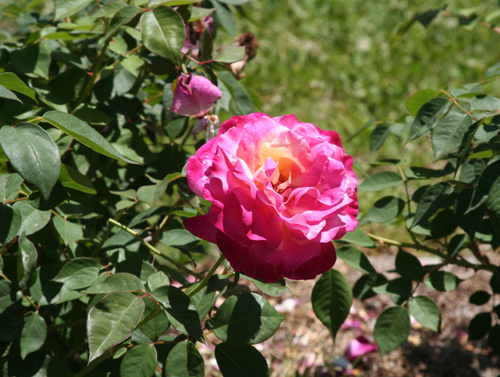
1991 year
Briefly about the specifics of care
In general, the care of this variety is similar to that used for other hybrid tea roses with low winter hardiness. The main requirements are as follows:
- the soil is fertile, light, well-drained;
- medium to good lighting, no prolonged shading;
- plentiful watering, but without a systematic flood;
- during the growing season - regular feeding, depending on the phase of development;
- timely spring pruning, pest control and disease prevention;
- for the winter, pruning and high-quality shelter, combined with good mulching.
Fulfilling these requirements, you will get a beautiful perennial bush, the flowers of which will delight your owner and numerous guests of his garden!
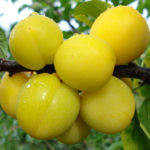


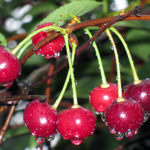
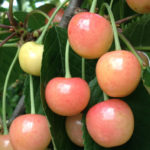




I have Abracadabra floribunda like in the photo. More precisely, each of its flowers is a pure surprise, how it will open from the bud - an eternal mystery. It can be very mottled on one side, while the second is an almost even burgundy tone with occasional streaks. It is interesting to see how the yellowish creamy spot turns white as it fades. The variety is bouquet-cut, the stems are almost without thorns, the peduncles are of decent length. But there are also enough minuses. This variety has almost no smell. In slushy weather, without the sun, it sits in buds and does not open. Black spot with powdery mildew quietly bypasses other roses, but this one will necessarily be attacked, and sometimes constant prevention does not help. It freezes in winter even in our South.